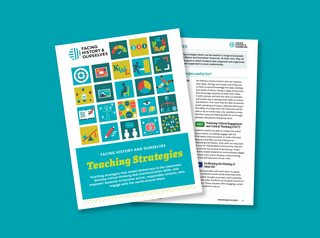
Barometer: Taking a Stand on Controversial Issues (UK)
Published
Overview

Teaching Strategies
About This Teaching Strategy
The Barometer teaching strategy creates active class discussion: it helps students express their opinions by asking them to line up based on their position on an issue. It is especially useful when you want to discuss a subject about which students have a wide range of opinions.
As a Barometer activity gets many arguments out on the table, it can be an effective exercise before students begin to structure an essay or assignment.
Procedure
Procedure
Variations
Unlimited Access to Learning. More Added Every Month.
Facing History & Ourselves is designed for educators who want to help students explore identity, think critically, grow emotionally, act ethically, and participate in civic life. It’s hard work, so we’ve developed some go-to professional learning opportunities to help you along the way.
Exploring ELA Text Selection with Julia Torres
On-Demand

Working for Justice, Equity and Civic Agency in Our Schools: A Conversation with Clint Smith
On-Demand

Centering Student Voices to Build Community and Agency
On-Demand
















